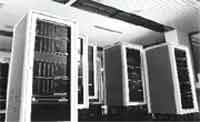Giga hit or mega flop?
 if one goes by precedents, this surely is a success that Indian hardware engineers can boast of. The Centre for Development of Advanced Computing ( c-dac ), Pune, recently unveiled the param 10000, its latest supercomputer. param 10000 can perform 100 billion (100,000,000,000) mathematical operations per second, making it Asia's second fastest computing machine.
if one goes by precedents, this surely is a success that Indian hardware engineers can boast of. The Centre for Development of Advanced Computing ( c-dac ), Pune, recently unveiled the param 10000, its latest supercomputer. param 10000 can perform 100 billion (100,000,000,000) mathematical operations per second, making it Asia's second fastest computing machine.
The announcement of the development was well timed, coming as it did just when the us , the largest exporter of supercomputers, announced further control over export of fast supercomputers to third world countries like India. In fact, 10 years ago the us had refused to sell the Cray ymp supercomputer to India on the excuse that it could be used for military purposes. Since c-dac came up with param 10000 six months ahead of schedule, it pre-empted moves by the us government and industry to retain control over the market for supercomputers.
But, as far as uniqueness of architecture goes, this is just a development over the previous param versions developed by c-dac . Moreover, in terms of supercomputing capabilities, computers in the us can outpace the machine by 10 times. So is brouhaha over the development justified?
All computers ultimately work on mathematics in binary notation (0s and 1s). Using this notation, a computer can work with true-false conditions and sort out logical problems. But mathematical problems requiring endurance
